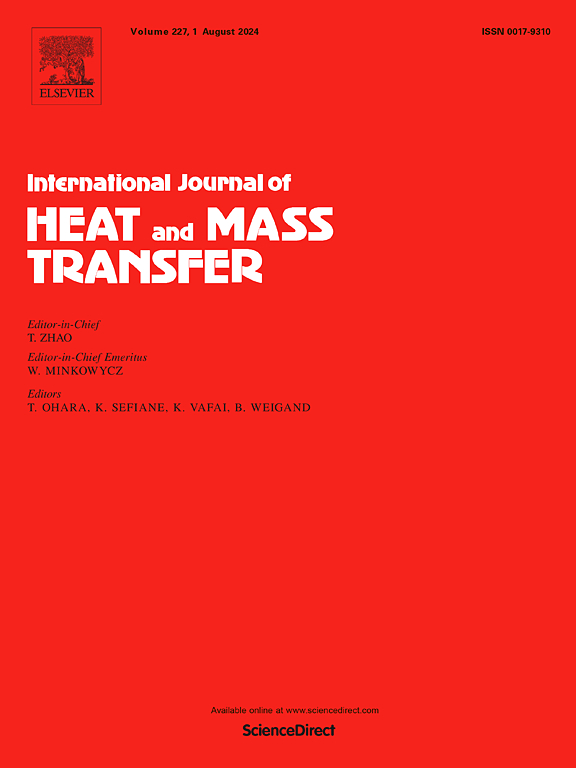Dynamic behaviors and heat transfer of HFE-7100 droplet impingement on heated copper surfaces
IF 5
2区 工程技术
Q1 ENGINEERING, MECHANICAL
International Journal of Heat and Mass Transfer
Pub Date : 2025-03-13
DOI:10.1016/j.ijheatmasstransfer.2025.126965
引用次数: 0
Abstract
Droplet impingement is of great significance in fields such as electronic heat dissipation and spacecraft thermal management, such as flash evaporator and high-power lasers. In this work, a systematic experiment is conducted on the HFE-7100 droplet impingement on a heated copper surface to investigate the effects of surface temperature (Ts) and Weber number (We) on the dynamic behaviors and heat transfer characteristics. The results demonstrate that the droplet impact behaviors can be classified into six regimes: deposition, deposition and splitting, partial bouncing, complete bouncing, fragmentation, and splashing. When We≤85.4, the maximum spreading factor (Dmax/D0) first decreases linearly with Ts and then remains constant when Ts>100 °C, while at We≥136.7, Dmax/D0 varies with Ts in four stages due to the existence of liquid fingers and vapor layer, being independent of Ts at Ts≤50 °C and Ts>100 °C, decreasing with Ts at 50 °C<Ts≤70 °C, and increasing with Ts at 70 °C<Ts≤100 °C. The average diameter of bubbles inside the liquid film strongly depends on Ts, while the average diameter of satellite droplets is significantly affected by We. The Leidenfrost temperature of drop is in the range of 100∼110 °C. At We=273.4 and Ts=75 °C, the heat flux is the highest at 958.6 kW/m², corresponding to the shortest droplet lifetime.
求助全文
约1分钟内获得全文
求助全文
来源期刊
CiteScore
10.30
自引率
13.50%
发文量
1319
审稿时长
41 days
期刊介绍:
International Journal of Heat and Mass Transfer is the vehicle for the exchange of basic ideas in heat and mass transfer between research workers and engineers throughout the world. It focuses on both analytical and experimental research, with an emphasis on contributions which increase the basic understanding of transfer processes and their application to engineering problems.
Topics include:
-New methods of measuring and/or correlating transport-property data
-Energy engineering
-Environmental applications of heat and/or mass transfer

 求助内容:
求助内容: 应助结果提醒方式:
应助结果提醒方式:


